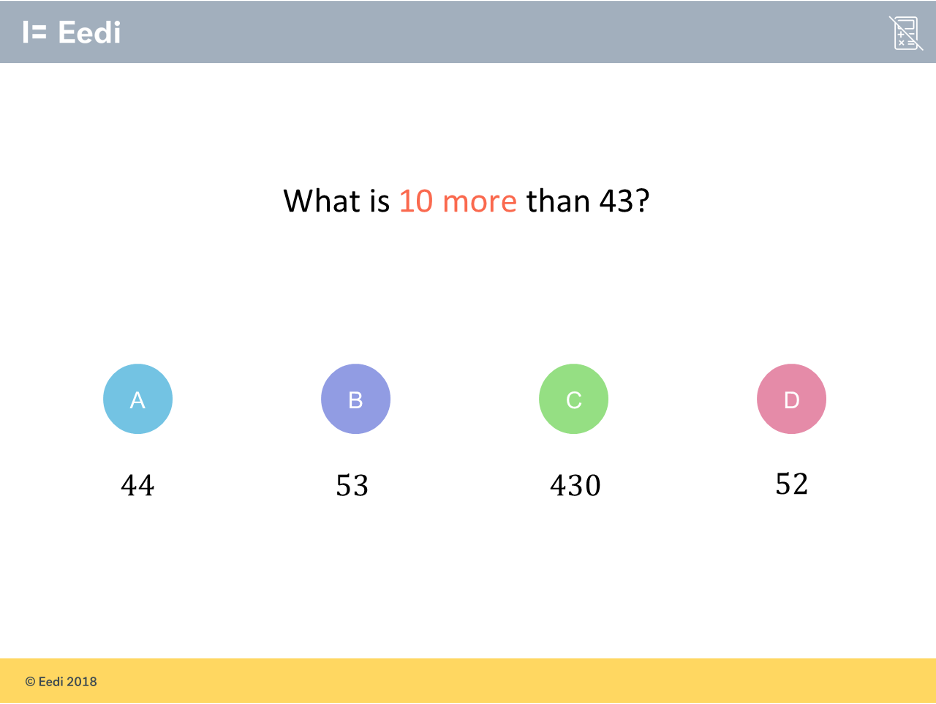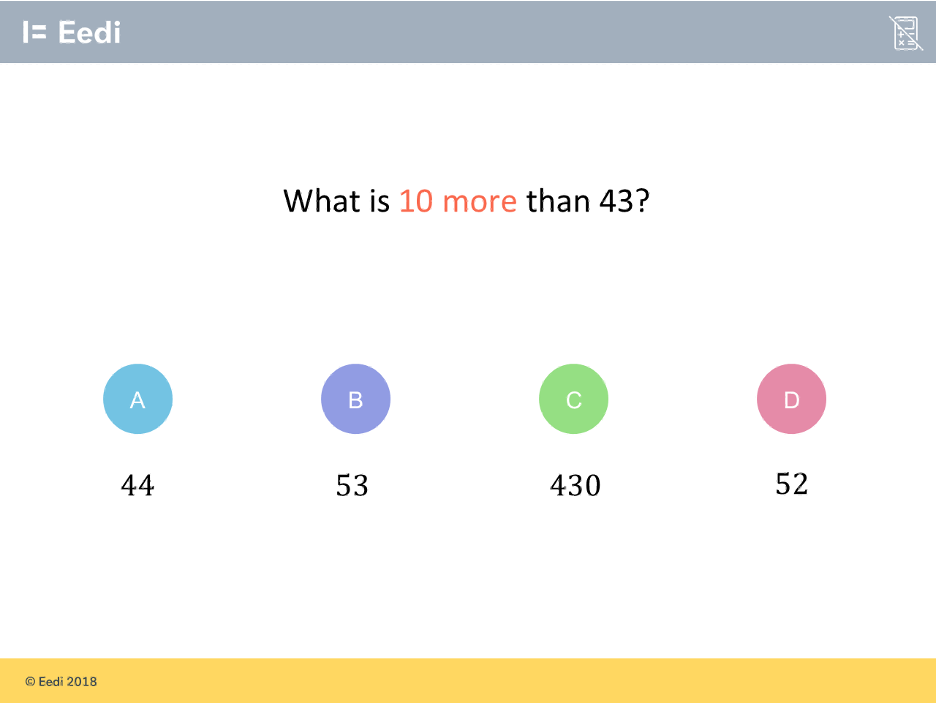Seven ways to use diagnostic questions to check for understanding
Ideas for making the most of this powerful question structure
This newsletter is made possible because of Eedi. Check out our brand-new set of diagnostic quizzes, videos, and practice questions for every single maths topic, ready to use in the classroom, and all for free, here.
It will be no surprise to long-time readers to hear that I am a big fan of diagnostic multiple-choice questions. Many years ago, my friend Simon and I built diagnosticquestions.com which grew to become the world’s largest depositary of multiple-choice diagnostic questions. More recently, we developed Eedi, a homework and assessment platform that has diagnostic questions at its core.
Over the years, I have developed a range of uses for diagnostic questions in the classroom to assess students’ understanding without the need for any fancy technology. In this post, I will share seven of these uses.
1. Challenge students to answer the question correctly
This is the obvious one. When presented with a selection of four answers, can students successfully navigate their way past the tempting distractors to arrive at the correct answer? ABCD cards, mini-whiteboards, or heads-down, fist-on-head can be used to see students’ choice of answer.
2. Challenge students to first answer the question without the choice of answers
A 2023 paper by van den Broek suggests that asking students to guess the answer before showing them the options improves memory and recall. The participants in the study were challenged to translate words, so there is no guarantee that the same effect transfers to mathematics or any other domain, but it is worth a go. We are hoping to research this very thing on the Eedi platform later this year.
3. Challenge students to explain the wrong answers to a diagnostic question
I have a mantra when it comes to diagnostic questions: the thinking doesn’t need to stop with the correct answer. Sure, students may be able to explain why B is the correct answer. But can they explain why someone else might think D is the correct answer? Furthermore, how would they convince that person that their answer cannot be right? This is a good challenge to give to a group of students whilst you support the rest of the class, or to give to everyone if they get the initial question correct.
4. Challenge students to make the wrong answers correct
This one works particularly well in maths. Once we have established that the correct answer is B, we can again turn our attention to the incorrect answers. This time the challenge is to change the question as little as possible to make one of the incorrect answers correct. As little as possible is the key. It taps into one of the key principles of variation theory, changing one key element, holding everything else the same, and observing the impact it has on the solution. So, how little can students change the question so C is the correct answer? Some may go for What is 10 times 43? Others may opt for What is 10 more than 420. Again, this can be a worthy challenge for a group of students or the whole class.
5. Challenge students to generate the wrong answers to a Diagnostic Question
Here we can make use of the Derring Effect, whereby deliberately committing errors even when one already knows the correct answers produces superior learning than avoiding them, particularly when one’s errors are corrected. Sarah Shi Hui Wong has written two excellent papers on the subject: The Derring Effect: Deliberate errors enhance learning and Deliberate Errors Promote Meaningful Learning
So, we can present students with the question without the four possible answers and ask students to generate plausible wrong answers for the question (alongside the correct answer). Students can swap answers with their partners and explain their reasoning. And then the big reveal can come when we show students what the original choice of answers is.
6. Challenge students to create their own diagnostic question
This is a step up from the previous option as this time students need to generate a question as well as the correct answer, plausible wrong answers, and reasons for those answers. This makes a fantastic Exit Ticket, homework assignment, or assessment question, allowing students to demonstrate the depth of their understanding.
7. Challenge students to reverse engineer a question
This is a fun one. You tell students the topic - in this case mental addition - show them the four answers, indicate the correct one, and challenge them to think what the original question was. Again, they can swap ideas and justifications with their partner before the big reveal.
For thousands of maths multiple-choice questions, check out our Eedi Quiz page, and for questions for all other subjects check out diagnosticquestions.com.
Which of the above have you tried?
Which are you excited to try?
Let me know in the comments below!
🏃🏻♂️ Before you go, have you…🏃🏻♂️
… checked out our incredible, brand-new, free resources from Eedi?
… read my latest Tips for Teachers newsletter about trying out new ideas?
… listened to my latest podcast about critical evidence during CPD, the Derring Effect and more?
… considered booking some CPD, coaching, or maths departmental support?
… read my Tips for Teachers book?
Thanks so much for reading and have a great week!
Craig








Hiya.
I use challenge 1 and 2 frequently but instead of using challenge 3 where I ask students to explain why the wrong answers are wrong, I ask them to explain why the correct answers are correct.
I find this focuses them on the mathematical conceptual understanding and also unearths reasons such as "I guessed." It's important to check how students get their answers. I have found challenge 2 quite useful in getting students to actually work out an answer rather than making a quick guess or a calculated guess where they arrive at an answer by the process of eliminating the obvious wrong ones or taking a clue from the most similar ones.